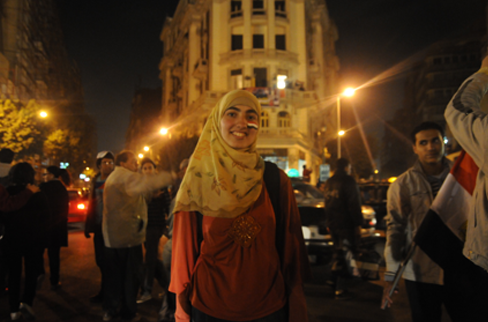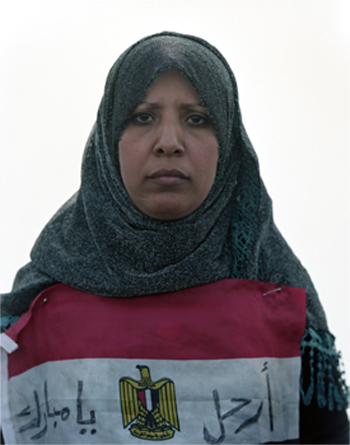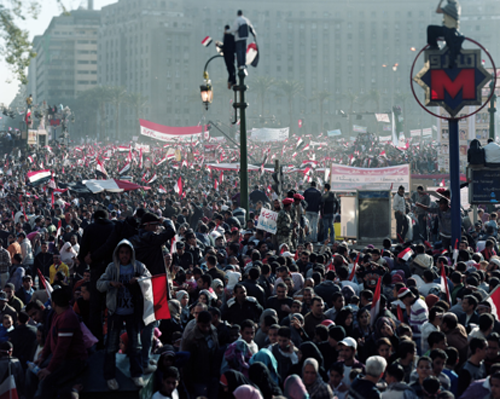t
HANTARAN MAS KAHWIN FOR ROSMAH DARI DEEPAK
Hantaran Mas Kahwin FOR Rosmah dari Deepak 
 Shimaa al-Haider after the Fall of Mubarak, February 2011 (Photo by Micah Garen/Four Corners Media)
Shimaa al-Haider after the Fall of Mubarak, February 2011 (Photo by Micah Garen/Four Corners Media)  Female Protestor in Tahrir Square, February 2011 (Photo by Micah Garen/Four Corners Media)
Female Protestor in Tahrir Square, February 2011 (Photo by Micah Garen/Four Corners Media)
 Tahrir Square one week after the fall of Mubarak, February 2011 (Photo by Micah Garen/Four Corners Media)
Tahrir Square one week after the fall of Mubarak, February 2011 (Photo by Micah Garen/Four Corners Media)
THIS RING GIFT FROM THE CARPET SELLER

Our UMNO response to a scandalous mess is neat and categorised. Cash and sex are the north and south pole of mass interest, each with a sprawling magnetic field. We divide the hemispheres with the equator of logic. Cash and corruption are the preserve of politics. Sex is the province of glamour. We refuse to recognise any cross-over evidence.
related article1 EVIL ROSMA: LADIES AND LADIES MAN I DONT GIVE A
2 DEEPAK TO ROSMA YOU ARE MY JAI-HO, GHOST ALTANTU
3 MERE KINKY SEXY ROSMA MERE BABI (SISTER) NAHI B
2 DEEPAK TO ROSMA YOU ARE MY JAI-HO, GHOST ALTANTU
3 MERE KINKY SEXY ROSMA MERE BABI (SISTER) NAHI B
Where the hell she got that money
Was the Bersih agenda wrong? The agenda was simply the call for the Election Commission to conduct its business cleanly and fairly. That to my mind is a legitimate and acceptable agenda.
This government responded by demonizing Bersih. This was all part of the boxed-in mentality of the ruling government to prevent any mass movement snowballing into a popular movement. When it responded the way it did, the very dreaded effect it wanted to avoid, came into effect.
Because public and international opinion made Bersih into the impression of a popular movement rather that a localised event it should have been.
Well, that’s what you get if the government is reactive by nature rather that proactive in a thoughtful way. It doesn’t want to engage Bersih, preferring the bully tactics so liked by people like Ibrahim Ali.
When the marchers took the streets in a peaceful manner, it took a life of its own. It wasn’t any more about Ambiga Sreenevasan or Anwar Ibrahim or whoever else. They may have set the tone and did some synchronisation, but once out there, the people called the shots.
U.S. Secretary of State Hillary Clinton’s visit to India this week offers a vital opportunity for the world’s two greatest democracies to jointly promote their common values supporting freedom and civil rights in South Asia — a region where extremism and China’s influence continues to grow. More specifically, the U.S.-India Strategic Dialogue must include a strategy for protecting human rights and fundamental democratic principles in Sri Lanka. Two years have passed since the end of the island-nation’s 26-year civil war, yet little has been done to address the underlying causes of the conflict. The Sri Lankan government continues to argue that its self-appointed Lessons Learnt and Reconciliation Commission (LLRC) can conduct an impartial investigation, but all previous government commissions failed to hold anyone accountable for the violence in Sri Lanka. Leading experts believe a credible commission should have been modeled in substance, not just in name, after South Africa’s Truth and Reconciliation Commission. Experts do not consider the LLRC an objective body or a viable judge of accountability, since it was commissioned by a government that itself bears responsibility for slaughtering tens of thousands of civilians during the final stages of the war. Enjoying the spoils of victory, President Mahinda Rajapaksa stacked the government with family members and continues to undermine the constitution and the fundamental tenets of democracy. After the war, presidential term limits were abolished, along with many key checks on presidential powers. Electoral reforms, political power sharing and greater regional autonomy — all key ingredients for reconciliation — have fallen off the agenda. Furthermore, the Rajapaksa government continues to intimidate independent journalists. The U.S. State Department’s 2010 Human Rights Report noted that journalists are practicing self-censorship out of fear of retribution. Disappearances of journalists continue and the government still censors international publications such as TheEconomist, confiscating all copies whenever stories appear about Sri Lanka. It is impossible for the government to defend its democratic record when Freedom House reports that the only countries in the region with worse press freedoms are Afghanistan, Burma, China and North Korea. Tamils and other ethnic groups continue to face official discrimination. The government is attempting to alter the island’s political landscape by building army posts and settling Sinhalese in traditionally Tamil areas in the north and east, while preventing thousands of internally displaced Tamil civilians to return to their homes. As Sri Lanka’s economy continues to improve, job opportunities in the north and east must be made available to local Tamils. Post-war Sri Lanka will not thrive unless the country invests in all of its human capital, including the Tamil population, and rebuilds the homes, schools, hospitals and employment base of those who were most heavily impacted by the war. Mrs. Clinton’s visit includes a stop in Chennai, where on June 8 the legislative assembly of Tamil Nadu, under the leadership of Chief Minister J. Jayalalithaa, passed a historic resolution calling for investigations of war crimes in Sri Lanka and urging the Indian government to impose economic sanctions against the country until it stops discriminating against Tamils. Although the visit to Tamil Nadu is primarily for the trade interests of both countries, Secretary Clinton cannot ignore the sentiments of the people of Tamil Nadu where the killing of tens of thousands of their fellow Tamil civilians across the narrow Palk Straits is still very raw and painful. The Tamil American Peace Initiative applauds the initiative of the Tamil Nadu assembly and urges the U.S. and Indian governments to also demand an independent, international investigation of the Sri Lankan war — one that will hold people on both sides of the conflict accountable, provide reparations to next of kin, close the book on the past, and restore democracy, equal rights, a free press, freedom of religion and economic opportunity. Secretary Clinton’s visit should also be used as an opportunity for the two governments to discuss the imposition of economic sanctions against Sri Lanka as a way of compelling the Rajapaksa regime to end policies that discriminate against ethnic groups, and to restore democracy and civil rights to all of the island’s peoples. Freedom is under threat in many areas of South Asia, and the United States and India should speak with a single voice and give hope to people across the region that the world’s two great democracies will stand together and fight injustice wherever it exists.
This I think is what the government doesn’t understand and because of that it responded the only way, a government believing in its own infallibility and invincibility behaves.
In the UK, our prime minister said that street demonstrations are not the way to form a government. He is stating what is already universally accepted nowadays. In Malaysia, no right thinking people harbours any thought about securing governmental power, through undemocratic or unconstitutional methods.
Indeed we quarrel a lot to ensure the sanctity and integrity of a democracy be preserved. Umno people went to court to seek a declaration that the 1987 Umno elections were subverted. A new Umno was formed in 1988. From then on, Umno could never qualify to have practised real democracy.
Malayan communism was ended half a century ago. Because the idea of forming a government through armed insurrection could never be accepted. Plus, there were a lot other complications such as religion and ethnic composition. Government is formed through the democratic way, through free and fair elections. We all do it through fair and clean elections, we are all democrats.
The statement that the PM raises and is fortified further by the solemn declaration of the deputy prime minister when he said no more street rallies, raises important points.
Why does a democratic system still make possible for other forms of collective political expression take place? If elections sort out all issues, if a democratically-elected government is supposed to end all issues, there wouldn’t be a need for other forms of collective political expression, would there?
The response towards Bersih has been handled badly. So the government becomes the target of international criticism. The issue has not died down in our own country.
Bersih has increased awareness among citizens on the importance of having clean and fair elections. That’s a simple demand. The circuitous responses by the EC and government supporters will surely widen the divide between voters and the ruing government.
Behind the whole issue of Bersih trying to prop up mass awareness and the government’s trenchant and violent response is the issue of a forgotten older ideal: That the power of all authorities exercising governmental functions ought to be limited by long-term rules that nobody has the power to alter or abrogate in the service of particular ends.
How does a government that has forsaken this older universal principle rule the country then? It rules mainly through the stalwarts system by ensuring those who hold the levers of authority are its obedient servants.
The judiciary? An emasculated and pliant one. The chief law officer? Their man. The chief of police? One who does its biddings. The chairman of the elections commission? Its chief apologist. The chief secretary? Maybe the one who will stall the swearing in of a new legitimate government come the next general election.
The Egyptian Revolution is not over. In many ways, it has just begun. As Egypt begins its difficult rebirth, reshaping and recreating itself into a New Egypt, an ideal expounded in the tents still crowded together in Tahrir, the country is fighting against the vestiges of power that fear change.
And they are many. Even after the fall of President Hosni Mubarak last February, those who had taken to the streets were only cautiously optimistic.
“The head is gone but the body is still there, kicking and punching” said Shima’a al-Haider, a young biotechnology student and activist who went to Tahrir Square the first day. Like many others, she was worried that changing the faces, and not the system itself, was not a real revolution.
Shima’a, like many young Egyptians, became a revolutionary after January 25, propelled from a virtual world of online activism into real world street protests by the success of the Tunisian revolution.
 Shimaa al-Haider after the Fall of Mubarak, February 2011 (Photo by Micah Garen/Four Corners Media)
Shimaa al-Haider after the Fall of Mubarak, February 2011 (Photo by Micah Garen/Four Corners Media) Egyptian women played a critical role in revolution. They were on the frontlines facing the brutality of thugs and police, they filled the tent city of Tahrir and through their voices — amplified on blogs, in tweets and in interviews — they became a strong force for the revolution.
 Female Protestor in Tahrir Square, February 2011 (Photo by Micah Garen/Four Corners Media)
Female Protestor in Tahrir Square, February 2011 (Photo by Micah Garen/Four Corners Media) We went to Egypt to document the revolution, sleeping in Tahrir with the protestors during the height of the clashing in February. We met incredibly dedicated visionaries who created a leaderless democracy in the protected perimeter of Tahrir Square — a “utopian vision of what Egypt could be”, in the words of many protestors.
After publishing a series of large format photographs of wounded protesters in Vanity Fair– Faces of the Facebook Revolution – and doing a short documentary for Granta Magazine – Four Women One Revolution – we are now working on a feature documentary film called If that follows four young women from the Revolution’s beginnings in Tahrir through the upcoming elections scheduled for the Fall.
Events are moving quickly in Egypt. Protestors have again occupied Tahrir Square after July 8. Several dozen hunger strikers are demanding changes to the military leadership, and civilian rights that have yet to be granted. Many protesters are being arrested and subjected to closed military tribunals, and some given long jail terms. The harassment of foreign journalists is also continuing, including the recent arrest of four reporters in Suez.
We recently spoke on the phone with Shima’a, one of the subjects of our film who is leading protests to the Ministry of Defense to hold the SCAF accountable and pressure them to hold trails for those responsible for the over 900 deaths during the revolution.
Below is a minute and a half audio file of the conversation that gives you a sense of how things are dynamically changing in Egypt today.
Among those pushing for change is Mona Seif, another character in our film and a young cancer researcher and longtime political activist who also went to Tahrir on the first day of protests. She began tweeting to an ever-growing international audience of thousands of followers.
Her cell phone became a weapon in the revolution. It continues to be her tool as she fights ongoing military trials of protestors, many held without charge, due process or fair representation. While the Army officially denies this, Mona is publically documenting these cases and is a member of the organization “No to Military Trials of Civilians”.
As the world’s attention shifts away from Egypt, so too does an understanding of the important role that women played in the Arab Spring. One slogan they hold forth is: “It’s not over yet”.
In the spirit of the “leaderless” revolution of Egypt, we have launched a Kickstarter campaign to crowdsource support and funds to finish this film. We have a deadline of August 3 on Kickstarter to raise the funds.
If is the coming-of-age story of four young women during the Egyptian revolution. Shimaa, the lead character we followed during the revolution, is in many ways a typical young woman, but with an exceptionally informed and unique voice. Shimaa is an avid reader of literature. She identifies with Holden Caulfield and discusses the contemporary political implications of Orwell’s 1984. She blogs about politics, philosophy and biotechnology, her major at university. Her world is forever changed on January 25, 2011. Defying her parents, she is one of the first to head to Tahrir Square. Her alienation gives way to activism — Holden Caulfield in 1968.
Our second character is Mona, an active blogger, whose mother is a prominent human rights activist. Mona becomes a tweeter extraordinaire. She is involved in the early planning of the revolution; as the movement progresses, her Twitter following grows to 10,000; through her Blackberry, her voice reaches the world.
The third character is Sarah, a curator of contemporary art at the Townhouse Gallery in Cairo. Used to viewing the world through the meta-lens of post-modern art, she too is quickly caught up in the revolution. When her friends are trapped in Tahrir Square without Internet access she starts to disseminate information to journalists through Twitter. Sarah moves from a world of ideas to a world of concrete action.
The fourth character is Nora, a young Egyptian woman who was getting her Masters degree in Brussels when the revolution started. She immediately heads back to Egypt with a job at the International Federation of Journalists. As she describes it, her role there “is to make sure that you don’t go missing.”
These four characters are representative of both the discontent that led to the revolution and the incredible optimism and activism that propelled it. The film is a nuanced story of four personal journeys interwoven, and also a portrait of the revolution. The Arab Spring continues to unfold with these four characters playing an ongoing role. They represent a dynamic, young, cross-section of the people who changed Egyptian society, and the future of the Arab world. Through them we will explore how they changed their world, and how the revolution changed them.
 Tahrir Square one week after the fall of Mubarak, February 2011 (Photo by Micah Garen/Four Corners Media)
Tahrir Square one week after the fall of Mubarak, February 2011 (Photo by Micah Garen/Four Corners Media)





No comments:
Post a Comment